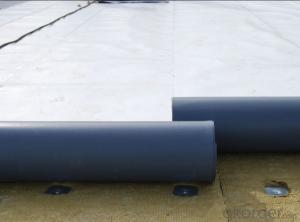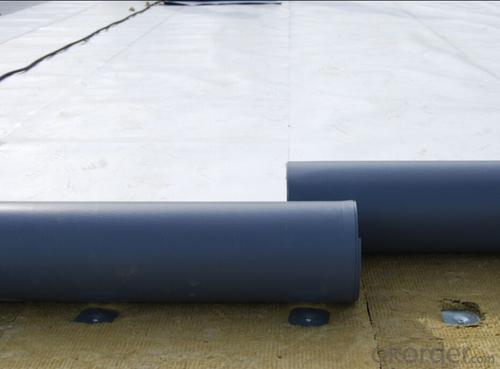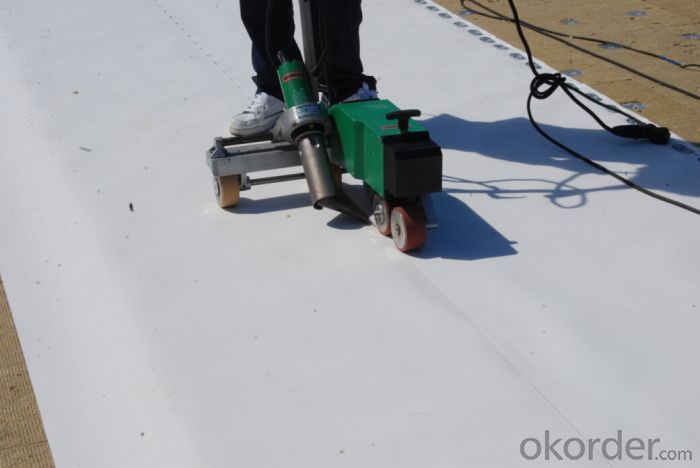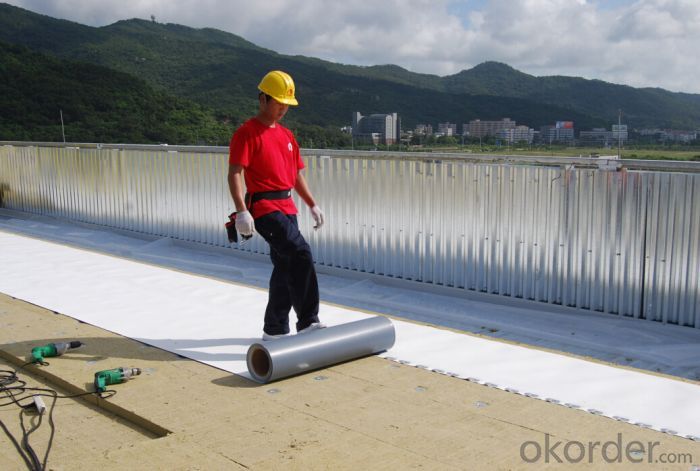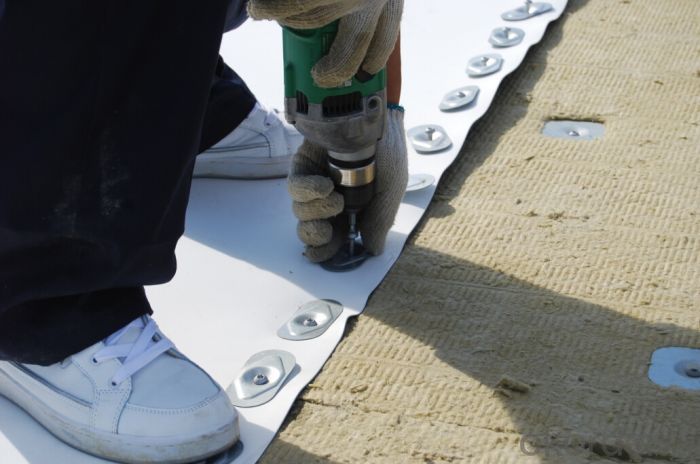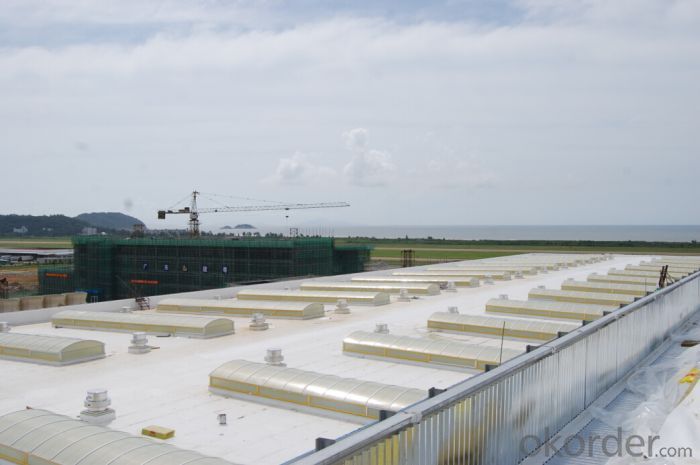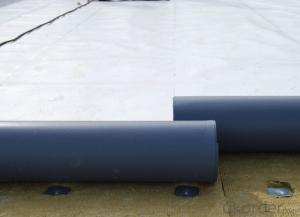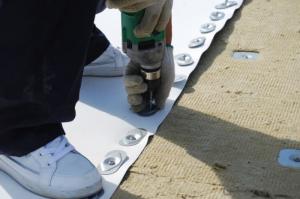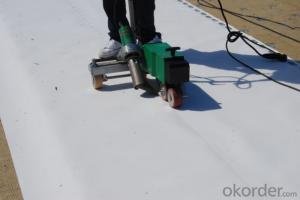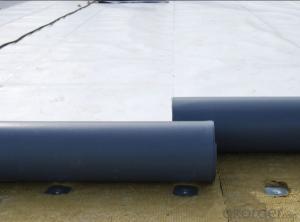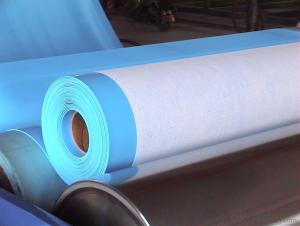TPO Waterproof Roofing Membrane 1.2 mm with Good Quality
- Loading Port:
- China Main Port
- Payment Terms:
- TT or LC
- Min Order Qty:
- 5000 m²
- Supply Capability:
- 100000 m²/month
OKorder Service Pledge
OKorder Financial Service
You Might Also Like
TPO Waterproof Membrane
TPO is a waterproofing sheet, consisting of thermoplastic polyolefin, and compound resin materials as the base stock, reinforced with polyester mesh fabric.
Product Applications:
Widely used in all kinds of building roof(exposed roof,planting roof,driving roof,light steel roof) and basement,tunnel,grain depot,subway,reservoir,etc.
Product Advantages:
1. Weather resistance and durability; Excellent weld ability;
2. No any crisp agents to prevent materials brittleness;
3. Intermediate enhanced polyester mesh fabric to have high tensile strength, fatigue resistance and penetrating resistance suitable for mechanically attached roofing systems;
4. Excellent the same high and low temperature resistance as rubber materials which can keep flexible at -50° C and keep mechanical strength in high temperature;
Main Product Features:
1.. Excellent chemical resistance to acids, bases, and restaurant exhaust emissions; Dimension stability;
2.. White-based light-color and smooth surface with high reflection, energy saving and anti-dust functions;
3. Use heat welding for the seam areas to form a reliable seamless waterproof layer.
Product Specifications:
Thickness: 1.2mm and 1.5mm
Item | Requirement | Test Method | ||
Thickness, min, mm | Sheet-overall | ≥1.0 | ASTM D6878 | |
Coating over fabric or scrim, weathering side only | ≥0.305 | ASTM D751 | ||
Breaking strength, min, N | ≥976 | ASTM D751 | ||
Elongation at reinforcement break, min, % | ≥15 | ASTM D751 | ||
Tearing strength,min, N | ≥245 | ASTM D751 | ||
Brittleness point, max, °C | ≤-40 | ASTM D2137 | ||
Ozone resistance | no cracks | ASTM D1149 | ||
Properties after heat aging | Breaking strength, % min | ≥90 | ASTM D573 | |
Elongation at reinforcement break, % min | ≥90 | ASTM D573 | ||
Tearing strength, % min | ≥60 | ASTM D573 | ||
Weight change (mass), max % | ≤±1 | ASTM D573 | ||
Linear dimensional change, max, % | ≤±1 | ASTM D1204 | ||
Water absorption, max, mass % | ≤±3.0 | ASTM D471 | ||
Factory seam strength, min, N | ≥290 | ASTM D751 | ||
Weather resistance | Visual inspection | - | ||
FAQ:
Q: Can I visit your company?
A: Yes, welcome to visit our enterprise.
Q: Can I do the third party testing before loading?
A: Yes, we could accept the third party testing.
Q: Which kind of payment in your company?
A: We could accept TT, LC at sight, etc.
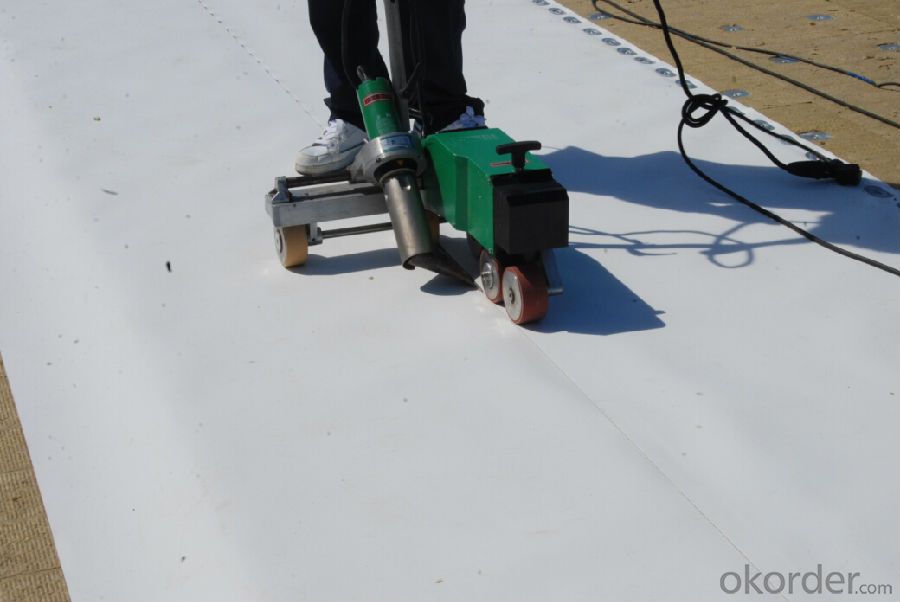
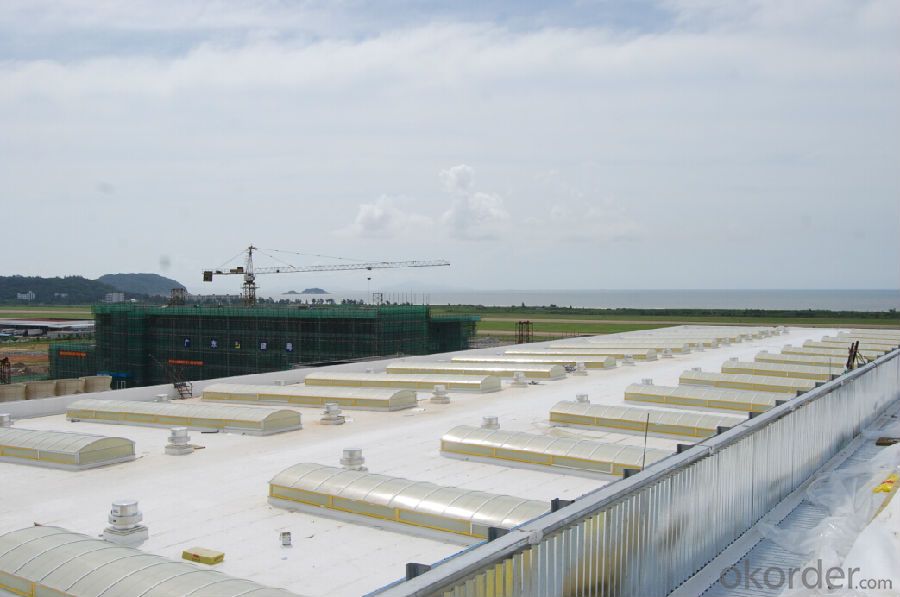
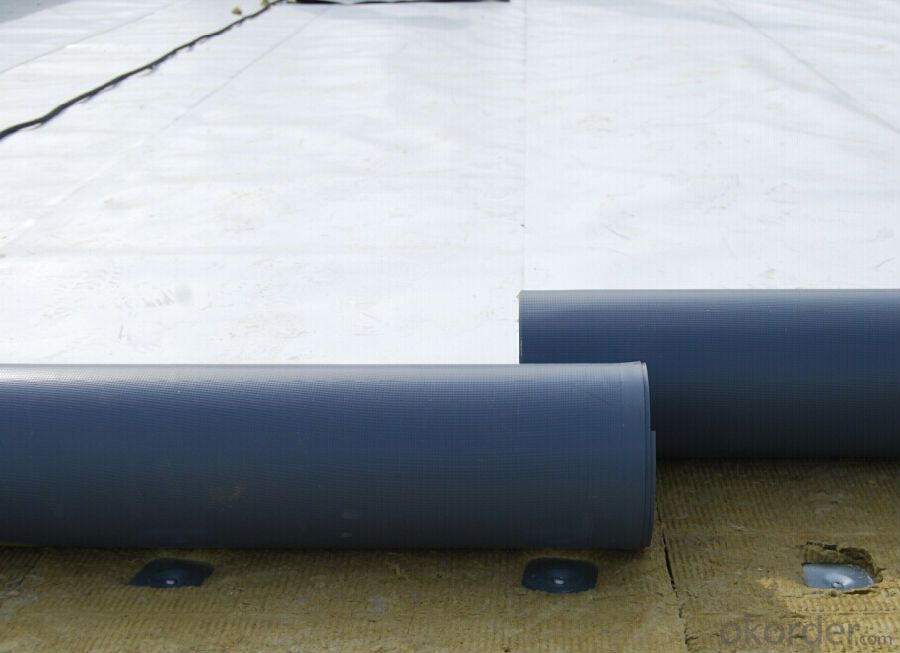
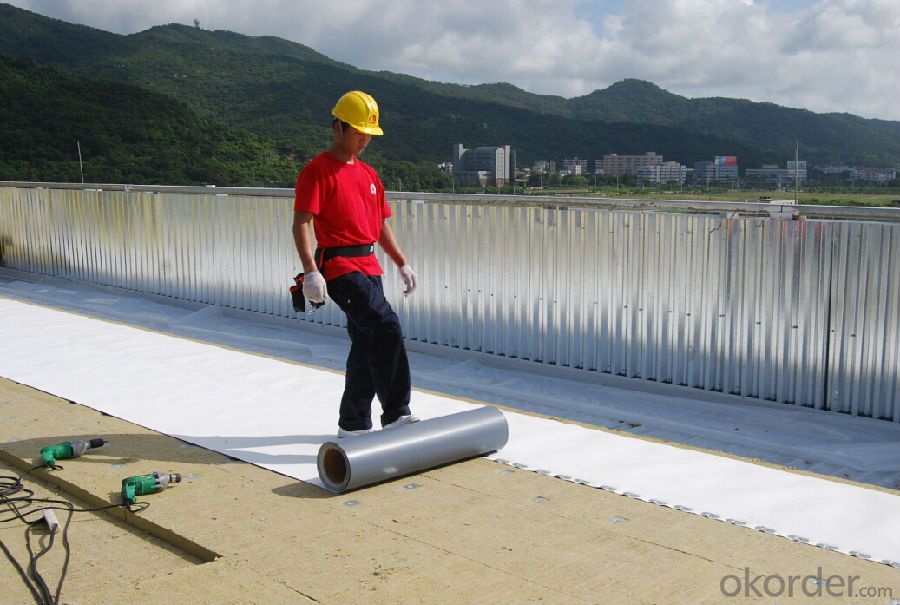
- Q: Can a waterproofing membrane be applied on any surface?
- A waterproofing membrane can be applied on a variety of surfaces, but it is important to consider the specific characteristics and requirements of each surface before proceeding. While many waterproofing membranes are versatile and can adhere to different materials, it is recommended to consult with a professional or manufacturer to ensure compatibility and optimal performance. For concrete surfaces, waterproofing membranes can be applied to prevent water penetration and protect against moisture damage. These membranes are typically designed to adhere to concrete and provide a barrier against water and vapor transmission. However, it is important to properly prepare the concrete surface by cleaning, repairing any cracks or imperfections, and ensuring a smooth and even substrate for the membrane. Similarly, waterproofing membranes can be applied to masonry surfaces such as brick or stone. These surfaces may require additional preparation, such as removing loose mortar or debris, and may benefit from a primer to enhance adhesion. Additionally, certain types of waterproofing membranes may be more suitable for these surfaces depending on their porosity and texture. Waterproofing membranes can also be applied to wood surfaces, such as decks or balconies, to protect against moisture damage and extend their lifespan. However, it is important to select a membrane specifically designed for wood surfaces as they may require additional flexibility to accommodate the natural movement and expansion of the wood. In summary, while a waterproofing membrane can be applied on various surfaces, it is crucial to consider the specific characteristics and preparation requirements of each surface to achieve optimal results. Consulting with a professional or manufacturer can help determine the most suitable membrane and application method for a particular surface.
- Q: Can a waterproofing membrane be used on balconies and decks?
- Balconies and decks can benefit greatly from the use of a waterproofing membrane. It is highly recommended to install this protective layer to safeguard against water damage. These outdoor areas are exposed to rain, snow, and other weather conditions, which can lead to issues like rot, mold, and structural deterioration if water seeps into the structure. By applying a waterproofing membrane beneath the surface material, such as tiles or decking, a barrier is created that prevents water from penetrating and redirects it away from the structure. This not only prolongs the life of the balcony or deck but also preserves its visual appeal. Moreover, the use of a waterproofing membrane is particularly crucial for balconies located above living spaces, as it prevents water from dripping down. In conclusion, incorporating a waterproofing membrane is an effective solution to ensure the durability and functionality of balconies and decks.
- Q: Can a waterproofing membrane be used for modular buildings or container homes?
- Yes, a waterproofing membrane can be used for modular buildings or container homes. These structures often have unique challenges when it comes to waterproofing due to their modular construction and potential for water ingress at joints and connections. A waterproofing membrane can effectively seal these areas, preventing leaks and water damage. It can be applied to the exterior walls, roof, and foundation of the structure, providing a durable and long-lasting waterproof barrier. Additionally, a waterproofing membrane can be customized to meet the specific requirements of modular buildings and container homes, ensuring optimal protection against water infiltration.
- Q: Can a waterproofing membrane be used in areas with high foot traffic?
- Areas with high foot traffic can indeed benefit from the use of a waterproofing membrane. These membranes are designed to safeguard against water and moisture, making them suitable for a range of environments, including those that experience heavy foot traffic. In fact, commercial buildings such as shopping malls, hospitals, and office complexes frequently utilize these membranes due to the constant flow of people. However, it is crucial to select the appropriate type of waterproofing membrane specifically designed for high foot traffic areas. Certain membranes possess enhanced durability and resistance to wear and tear, making them an excellent choice for such environments. Furthermore, proper installation and maintenance are essential to ensure the longevity and effectiveness of the membrane in areas with heavy foot traffic. It is also advisable to consider the unique requirements of the area and consult professionals or manufacturers to determine the most suitable waterproofing membrane for the given conditions. By carefully selecting and expertly installing the membrane, one can effectively shield areas with high foot traffic from water damage and ensure their longevity.
- Q: Can a waterproofing membrane be used for residential buildings or homes?
- Yes, a waterproofing membrane can be used for residential buildings or homes. It is commonly used in basements, bathrooms, and other areas prone to water damage to prevent moisture infiltration and protect the structure from potential water leaks or flooding.
- Q: Can a waterproofing membrane be used for residential buildings or homes?
- Yes, a waterproofing membrane can be used for residential buildings or homes. Waterproofing membranes are commonly used in construction to prevent water penetration and protect the building's structure and interior from moisture damage. They can be applied to various areas such as basements, roofs, foundations, and bathrooms, among others. By creating a barrier against water, these membranes help to prevent leaks, mold growth, and damage to the building materials. Therefore, using a waterproofing membrane is an effective way to ensure the longevity and durability of residential buildings or homes.
- Q: Are waterproofing membranes resistant to salt damage?
- Yes, waterproofing membranes are generally resistant to salt damage. They are designed to protect against moisture and other environmental factors, including saltwater. The membranes are specifically engineered to provide a barrier that prevents water and salts from infiltrating and causing damage to underlying structures.
- Q: Can a waterproofing membrane be used on asphalt surfaces?
- Yes, a waterproofing membrane can be used on asphalt surfaces. Waterproofing membranes are often used to protect various surfaces, including asphalt, from water damage. They create a barrier that prevents water from seeping into the asphalt, reducing the risk of cracks, deterioration, and other forms of damage caused by moisture.
- Q: Can waterproof sheets be used on steel roof panels?
- The main products are asphalt waterproofing membrane and polymer waterproofing membrane.
- Q: What is the meaning of "channel" and "layer" in the practice of polymer waterproofing membrane?
- such as: Roof specification, 4mmSBS in a class Ⅲ waterproof for a, and 3mmSBS coil for Ⅲ grade roof waterproof, although a layer of waterproof, but did not meet the specifications, not a waterproof. In the Ⅱ level (two waterproof) Ⅰ (three waterproof) waterproof, SBS is one of the layer, the thickness requirements for the 3mm, so 3mmSBS coil in the Ⅱ grade Ⅰ waterproof as a waterproof.
Send your message to us
TPO Waterproof Roofing Membrane 1.2 mm with Good Quality
- Loading Port:
- China Main Port
- Payment Terms:
- TT or LC
- Min Order Qty:
- 5000 m²
- Supply Capability:
- 100000 m²/month
OKorder Service Pledge
OKorder Financial Service
Similar products
Hot products
Hot Searches
Related keywords
